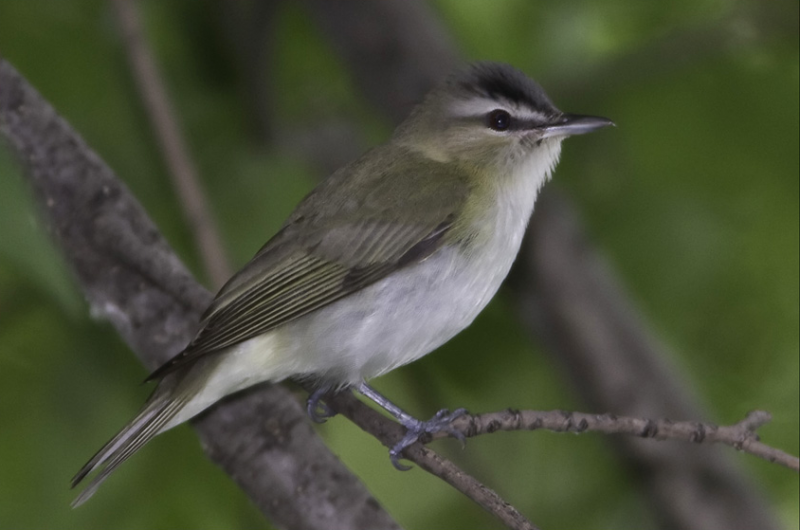Why Do Some Bird Species Sing More Than Others?
We often describe singing as a behavior that is done to establish and hold a territory against other individuals of the same species and/or to attract a mate and maintain the bond with that mate. So why, then, do red-eyed vireos sing 10,000 to 20,000 songs a day? Why do we hear singing red-eyed vireos from May, when they arrive from their South American wintering grounds, through the hot days of summer and into August, when virtually all other birds have stopped singing? Why do we hear northern cardinals singing in February and still singing in August or even later in the fall? Why do northern mockingbirds sometimes sing all night and throughout much of the year?
Conversely, why do we rarely hear a warbling vireo sing after the end of June? And why do we tend to hear Baltimore orioles sing just for a short time at the beginning of summer, and even then, most regularly just in the mornings during that time?
The answer to these questions and to the broader question of why there is so much variation in daily song rates and seasonal rates of singing among different species of birds is complex and not well understood.
Perhaps in abundant species, increased competition requires more song to defend a territory from constant incursions of both nearby neighbors and from wandering birds who have not been able to establish their own territory. We have wondered if this could be true in red-eyed vireos, as their North American population has been estimated at over 100 million. But this wouldn’t answer the question of why they are one of the last species one hears singing every summer. Unless the great abundance of red-eyed vireos means that there are always a few individuals, perhaps first-year males, that were not successful in finding a mate and are still trying as the season winds down?
Does this line of thinking then make us assume that species for which we don’t hear singing males late in the year, must not be abundant? Well, maybe. Baltimore orioles are estimated to have a total population that is only about a 20th the size of the red-eyed vireo population, and the total population of warbling vireos is about a seventh the size. But both of these species tend to prefer the edges of lakes, rivers, and streams, thus the habitat they call home occurs in rather narrow strips. Therefore, it is quite limited in extent. This means that while their total population size may be smaller, the number of males within those limited areas could well cause a high level of competition and seemingly a high rate of singing, and a long singing season. But that’s not what happens in these species.
We hope you are not disappointed to find that neither we nor anyone else that we know of has the complete answer to these questions. That’s what makes science, including the science of understanding bird behavior, so fascinating and fun. There is still much to learn, and we hope someone out there is studying these questions and will get closer to a full understanding in years to come!
Jeffrey V. Wells, Ph.D., is a Fellow of the Cornell Lab of Ornithology. Dr. Wells is one of the nation's leading bird experts and conservation biologists and author of the “Birder’s Conservation Handbook.” His grandfather, the late John Chase, was a columnist for the Boothbay Register for many years. Allison Childs Wells, formerly of the Cornell Lab of Ornithology, is a senior director at the Natural Resources Council of Maine, a nonprofit membership organization working statewide to protect the nature of Maine. Both are widely published natural history writers and are the authors of the popular book, “Maine’s Favorite Birds” (Tilbury House) and the just-released “Birds of Aruba, Bonaire, and Curaçao” from Cornell University Press.































